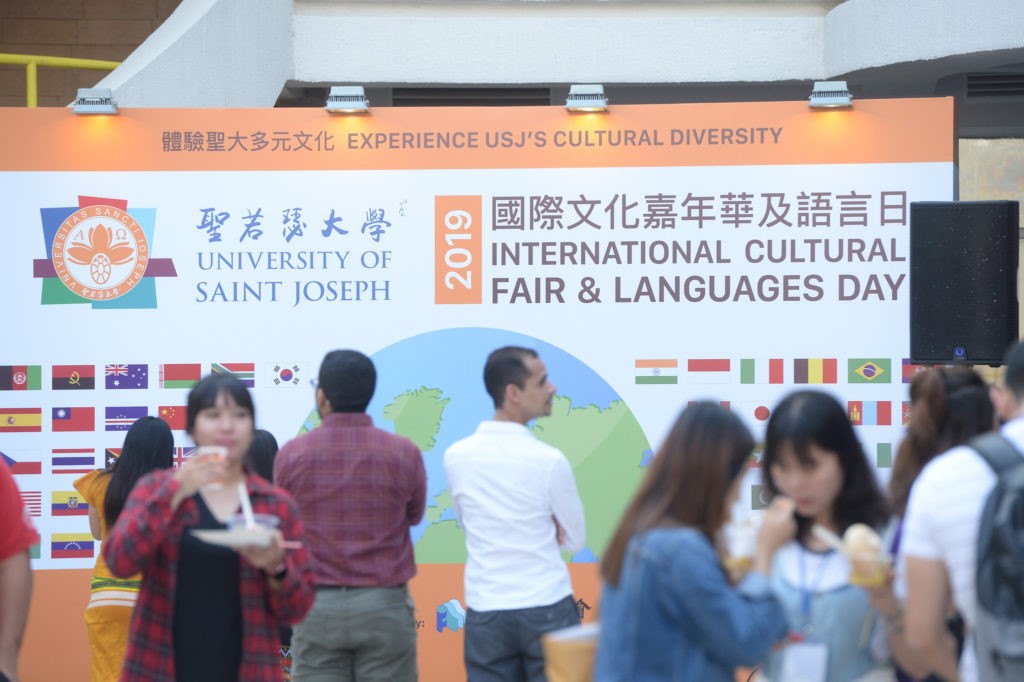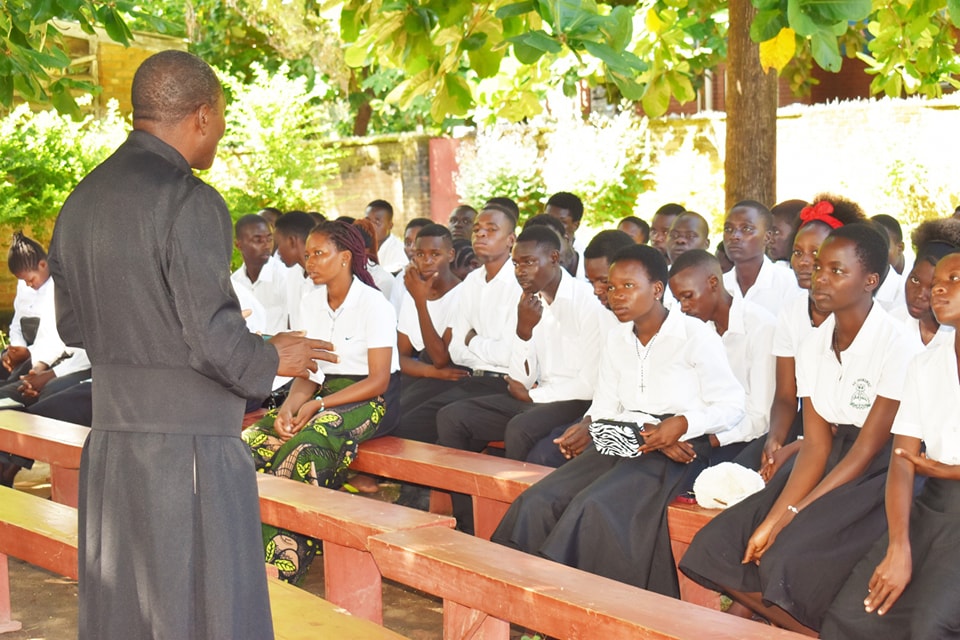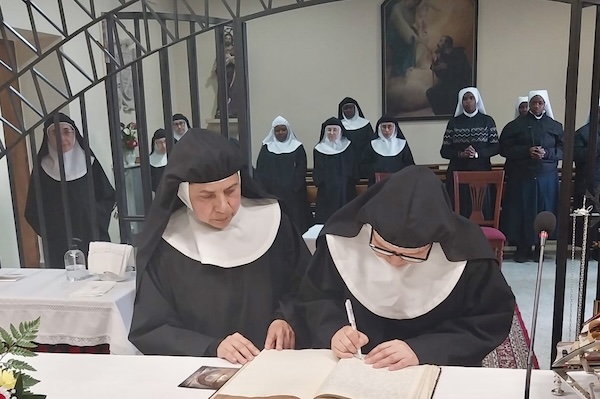– Maria Kwak
Catholic higher education in Macau goes back to the establishment of the College of Saint Paul in the late 16th century. It was the first Western university in East Asia, equivalent to our modern-day university. It was established by the Italian Jesuit Father Alessandro Valignano (1539-1606) in 1594. As he saw a need to attain competency in the Chinese language, a request was made to send Jesuit scholar Michele Ruggieri (1543-1607) to Macau, who is considered the first European sinologist among scholars. Together with Matteo Ricci (1552-1610), they have become the first European scholars of China and the Chinese language. During 1583-88, they co-authored the first European-Chinese dictionary and first European translation of the Four Books of Confucianism.
A statue of Confucius (551–479 BC) at the Ilha Verde Campus stands as the perfect example of adaptationist initiatives adhered by Jesuits in the early days of their missionary works during the Ming China. Such respect for the culture and values held by the Chinese is an integral part of the intercultural exchange between the West and the East.
The University of Saint Joseph was created by the Universidade Católica Portuguesa and the Diocese of Macao in 1996, initially with the name of Instituto Inter-Universitário de Macau (IIUM). The motto of the Diocese of Macao, “Scientia et Virtus” (Knowledge and Virtue) is reflected in the university, in pursuit of truth and the common good for the benefit of humanity. Most recently, USJ held the orientation day for the 2019/2020 academic year to assist new students to adjust to a new environment.
Contribution to multilingual society
The present-day USJ stems from the Real Colégio de S. José (Royal Seminary of St Joseph). As the cornerstone of USJ, the seminary continues to serve as a base for the Faculty of Religious Studies. While the old seminary (St Paul’s) concentrated on the Japanese missions, the new seminary was specifically set up for the Chinese province. Such proposal was made during the reign of the Portuguese King Pedro II (re. 1683-1706), who had been the benefactor of the seminary. It was established on 23 February 1728, by the order of João de Sá (1672-1731) and Luís de Sequeira (1693-1763) who served as vicar general of the diocese and procurator of the Jesuit province respectively.
During the 19th century, the seminary published some innovative language books including the Chinese grammar book Arte China (1829), Portuguese-Chinese dictionary Diccionario portuguez-china no estilo vulgar mandarim e classico geral (1831) and the Chinese-Portuguese dictionary Diccionario china-portuguez (1833), written by the lazarist sinologist Joaquim Afonso Gonçalves (1781-1834) who taught at the seminary. Students received education in the disciplines in Humanities and Religion along with those who were training for priesthood and missionary works in Asia. These early initiatives of providing a connection in the Chinese and Portuguese languages are now being carried out by the Department of Humanities at the Ilha Verde Campus.
Bridge between Macau and the world
Multiculturalism has been the characteristics of Macau’s culture as far as back since the 17th century. As recorded by the Chinese Jesuit Wu Li (c. 1632-1718), various languages such as Latin, Italian, Portuguese and Chinese were spoken and heard when passing through the Largo da Companhia de Jesus in those days. Such history inspires the USJ to recreate an international environment where the medium of instruction is English while Cantonese and Portuguese are also widely spoken at the campus. The unique multicultural environment permits its community members a trilingual experience. Exchange programmes with universities worldwide, various public lectures and International Cultural Fair & Languages Day are held every year promote its students to experience cultural exchange between China and Europe. Last November, an international symposium highlighting the issues of cross-cultural exchange and communication in the Greater Bay Area took place at USJ, co-organised by the Macau Ricci Institute.
Ilha Verde Campus
USJ moved its main campus to Ilha Verde in September, 2017. Ilha Verde (淸州) was an island before it was connected to the Macau Peninsula in 1895. It was Jesuit fathers Valignano and Valentim Carvalho who discovered the unpopulated island in 1603-1604. According to the public document dated 1617 (cf Macau e as suas Ilhas, Vol. 1), the island was a retreat place for Jesuits in China. It was owned by the Jesuits since 1762 and acquired by the College of Saint Joseph in 1828. The campus was officially inaugurated by His Eminence Cardinal Fernando Filoni, the Prefect of the Congregation for the Evangelisation of Peoples, earlier in May this year. In his opening speech, he highlighted the role of Saint Joseph in a Catholic educational institution. As the only Catholic university in China, the significance of Saint Joseph cannot be forgotten, given that he was declared as the patron saint of China in 1668 at the end of Rites Controversy. On a recent note, the USJ has become part of the Alliance for Technological Innovation and Talent Development in Western Greater Bay Area (Guangdong-Hong Kong-Macau). The aim of such alliance is to enhance the GBA in order to promote technology innovation and talent development. The presence of USJ in Macau enables a link between other 9 cities in China and Hong Kong.
Community of humanistic approach
The university continues to serve as the ground for the Catholic tradition in Macau through academic degree programmes at pre-university, undergraduate and graduate level in an international environment. It is a community of teachers and scholars who are simultaneously committed to inherit and pass down knowledge. Valignano’s humanistic approach in providing equal opportunities in academic pursuits to all humankind regardless of one’s ethnic, cultural, religious background is still envisioned through the intercultural exchange among the students, faculty and staff at USJ, who come from over 60 different countries.


 Follow
Follow


